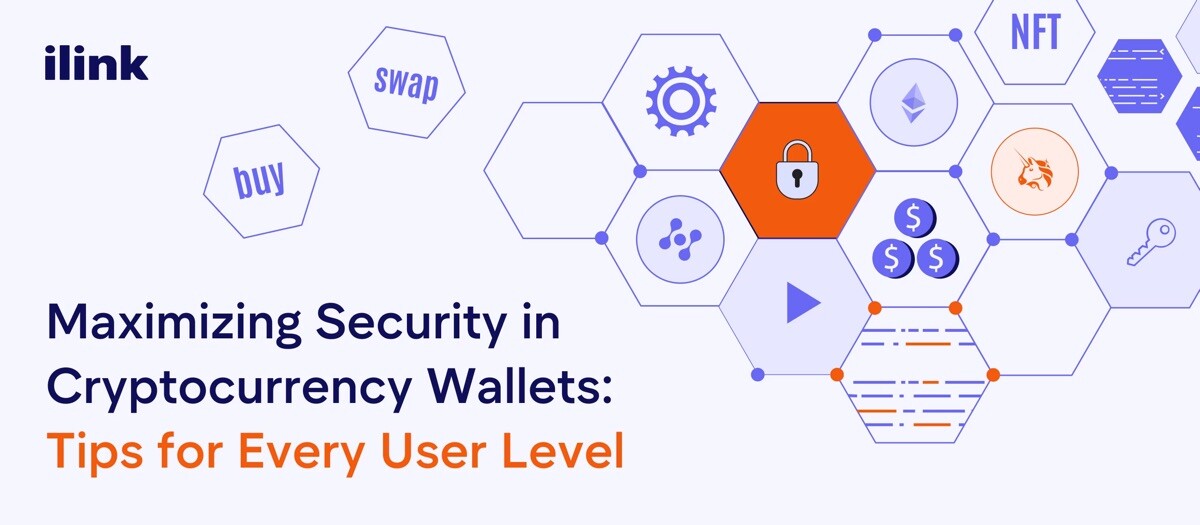
Maximizing Security in Cryptocurrency Wallets: Tips for Every User Level
In the burgeoning world of cryptocurrency, the security of your digital assets is paramount. As cryptocurrencies continue to gain mainstream acceptance, the allure for potential thieves grows stronger. This makes the security of your cryptocurrency wallets not just a priority but a necessity. This article aims to guide users of all levels—from novices to seasoned crypto enthusiasts — on how to maximize the security of their wallets and, by extension, their digital fortunes.
Understanding Cryptocurrency Wallet Security
At its core, a secure cryptocurrency wallet should do a good job of protecting your private keys — it is the cryptographic equivalent of the keys to a bank vault. Private keys, paired with public addresses, enable the sending and receiving of cryptocurrency. Encryption plays a critical role here, encoding your wallet’s data to shield it from unauthorized access. Understanding these elements is crucial for anyone looking to secure their digital assets effectively.
Basic Security Practices for Beginners
- Choosing the right wallet. The first step in securing your cryptocurrency is selecting the appropriate wallet. Hardware wallets, external devices that store your private keys offline, offer robust security against online threats. On the other hand, software wallets, while more convenient, are susceptible to malware and hacking. Weighing their security implications is vital for beginners.
- Strong passwords. The foundation of digital security, a strong, unique password, is your first defense against unauthorized access. Incorporating biometric security, such as fingerprint or facial recognition, can also add a layer of security to your wallet.
- Secure backup. Backing up your wallet keys and recovery phrases is essential. Store them in a secure location—preferably offline—to prevent loss or theft. This ensures that you can regain access to your assets, even if your device is lost or damaged.
Intermediate Security Measures
- Biometric security. Biometric security involves using unique physical or behavioral characteristics for verification purposes, making it significantly more challenging for unauthorized users to gain access to your digital assets.
For an added layer of security, combine biometric verification with other forms of authentication, such as a passcode.
- Device security. Ensure that the device you use for accessing your cryptocurrency wallet has robust biometric security features. This is particularly important for mobile wallets, as smartphones are increasingly equipped with sophisticated biometric sensors.
Recognizing Phishing Attempts
Phishing scams are becoming more sophisticated, often mimicking legitimate companies or services to trick individuals into divulging sensitive information. Here’s how to sharpen your skills in recognizing and avoiding these threats:
- Email and message scrutiny. Always scrutinize emails and messages carefully. Check for telltale signs of phishing, such as misspellings, grammatical errors, and email addresses that closely resemble, but do not exactly match, those of legitimate entities.
- Urgency and threats. Be wary of messages that convey a sense of urgency or threaten dire consequences if immediate action is not taken. Phishers often use these tactics to prompt hasty decisions.
- Link verification. Before clicking on any links in emails or messages, hover over them to preview the URL. Ensure it leads to a legitimate website. Consider manually navigating to the website by typing the URL into your browser instead of clicking on the link directly.
- Unsolicited requests. Be cautious of unsolicited requests for personal information, private keys, or wallet credentials. Legitimate organizations will never ask for sensitive details through insecure channels like email or text messages.
- Educational resources. Many cybersecurity firms and crypto communities offer resources and training on recognizing phishing attempts. Taking advantage of these resources can significantly improve your ability to spot scams.
By incorporating biometric security and becoming adept at recognizing phishing attempts, cryptocurrency users can significantly bolster the security of their wallets. These measures, while intermediate in nature, provide a crucial defense layer against increasingly sophisticated online threats. Stay informed, stay vigilant, and regularly update your security practices to protect your digital assets effectively.
Utilizing Wallet Security Features
- Exploring built-in security features. Familiarize yourself with your wallet’s security settings. Features like auto-lock and session timeouts can prevent unauthorized access during periods of inactivity.
- Smart contract interaction. When interacting with smart contracts, proceed with caution. Review the contract’s code (if possible) or rely on audits from trusted sources to mitigate risks.
Staying Informed on Security Practices
- Regularly reviewing security settings. Make it a habit to review and update your security settings periodically. As new threats emerge, staying proactive is key to safeguarding your assets.
- Staying updated on crypto security trends. The crypto landscape is constantly evolving, with new threats and security measures emerging regularly. Follow trusted sources in the crypto community and the cryptocurrency wallets developers to stay informed about the latest security trends and advice.
The security of your cryptocurrency wallet is fundamental to the safety of your digital assets. By adhering to these tips and continuously educating yourself on best security practices, you can significantly minimize the risk of losing your investments to cyber threats. Remember, in the realm of cryptocurrency, the responsibility for security lies squarely on the user’s shoulders. Take the initiative to review and enhance your wallet’s security today—your digital future may depend on it.

